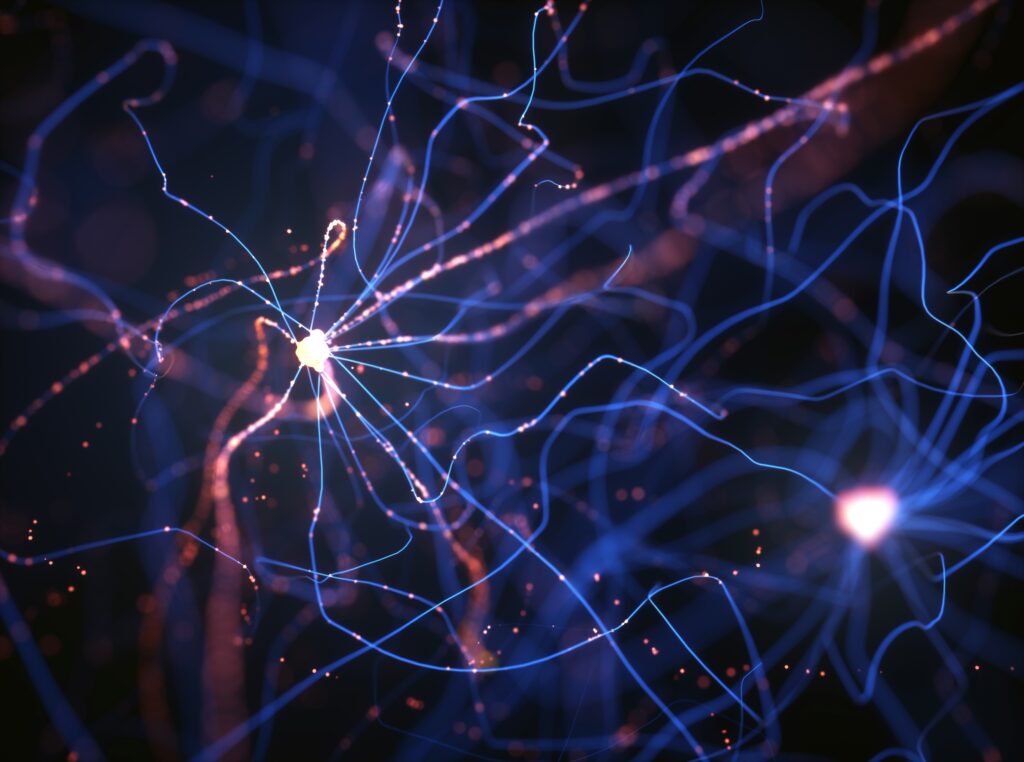Freedom and Will as fundamental: Utpaladeva and Schopenhauer compared
Reading | Comparative Philosophy
![]() Willy Pfändtner, PhD | 2023-11-05
Willy Pfändtner, PhD | 2023-11-05

Two philosophers, separated by time and geography, arrive at surprisingly similar conclusions regarding the nature of self and reality: universal consciousness driven by will and imagination. Dr. Pfändtner takes us on a delightful and edifying journey of comparative philosophy.
In this essay, the philosophies of two thinkers from very different traditions are compared. One is the Indian philosopher Utpaladeva (c. 925-975) and the other the German philosopher Arthur Schopenhauer (1788-1860). I am well aware of the problems involved in such an attempt and one may question its utility. However, the fact that the two find freedom and will, respectively, as the essence of consciousness, which they view as fundamental reality, I find intriguing. The essay first situates the thinkers in their respective traditions and presents their respective challenges and arguments. Then their views on aesthetics and liberation are compared. The essay is based on a paper presented at the EASR Conference 2022 at University College Cork. The theme of the conference was “Religions and States of Freedom.”
Utpaladeva lived in Kashmir India in the 10th century. He is a thinker in the nondualist tradition that often goes by the name of Kashmir Shaivism. The Pratyabhijña philosophical system, to which Utpaladeva is a main contributor, is however quite free standing in that it avoids scripturally based assertions. It can be considered the philosophical bases for all Hindu tantrism, and its sophistication seriously challenges the opinion of those who claim that tantrism’s contribution to philosophy is negligible. Utpaladeva considers, and aims to demonstrate, that freedom is the essence of any individual’s consciousness.
The founder of Pratyabijña is known to be Somananda (c. 875-925), and the most well-known representative of the school is Abhinavagupta (c. 975-1025), who also commented on the works of Utpaladeva. Due to extensive recent research done by the indologists Raffaele Torella and Isabelle Ratié, it has become clear that Utpaladeva’s contribution to the system has been decisive. Pratyabijña is generally translated as ‘recognition.’ It is an idealist philosophy aiming at realizing our identity with universal consciousness through experience and reason.
I claim that this is not only of historical interest; Idealism, as a relevant metaphysical philosophical standpoint, has recently resurged and challenged physicalism due to developments in, for example, quantum physics and neuroscience. It has also become a possible solution to the so-called ‘hard problem of consciousness’ in the philosophy of mind. As an answer to the problem of how inanimate matter could give rise to consciousness, an utterly different ontological category, many have concluded that consciousness must in some way be fundamental.
One philosopher, who due to these developments has received new attention, is Arthur Schopenhauer. Previously, it is mainly his views on psychology, aesthetics and ethics that have influenced artists as well as thinkers, but now it is his metaphysics that is on the table.
Like Utpaladeva, Schopenhauer is an idealist, which means that he considers consciousness fundamental. The phenomenal world that we can perceive is a representation of universal consciousness. The essence of consciousness is, for Schopenhauer, “Will.” Utpaladeva considers it to be “Freedom.” The terms “freedom” and “will” are not synonymous, but related, as in the expression “free will.” Both philosophers argue that one can come to their conclusions simply by experience, intuition, and reason.
The cultural and historical situations in which philosophical questions are asked are, of course, of crucial importance, and the meaning of terms and categories may be difficult to translate from one language to another. It is impossible for me to get into the mind of either Utpaladeva or Schopenhaurer. However, I think that a passable comparison of reasoning within fields such as ontology and aesthetics across cultures may be made. And in this context, I find it intriguing to attempt to compare to thinkers, who both are idealists and have different, but at the same time rather similar, ways of characterizing the driving force behind the world. The Sanskrit word that Utpaladeva uses is svatantrya, which can be translated as “absolute freedom.” Schopenhauer uses the German word “Wille” in the sense of “an unbounded will or urge.” Now, I will situate each thinker in the specific context in which his thinking developed.
Schopenhauer’s metaphysics
Schopenhauer was firmly rooted in the Western philosophical tradition, mainly influenced by Kant and Plato. But he also acknowledged inspiration from a text called Oupnek’hat, which was a Latin translation of a Persian translation of some of the Upanishads. He was not at all concerned whether the double translation might have altered the meaning. He simply found, and was inspired by, conformities with his own philosophy in the translated text. Like Utpaladeva, he was an independent philosopher, not an exegete.
In his work Die Welt als Wille und Vorstellung (The World as Will and Representation) Schopenhauer builds on Kant’s notion that the phenomenal world is not the world as it is in itself. For Kant, the phenomenal world is viewed through our human spatio-temporal lens. Space and time are not mind-independent realities, and in this Schopenhauer agrees. Kant also claims that our knowledge of the phenomenal world is determined by our twelve human categories of understanding, of which Schopenhauer retains only one, causality.
For Kant, the world as it is in itself, “das Ding an sich,” cannot be known. In this, however, Schopenhauer disagrees. He also disagrees on Kant’s view that it is the thing-in-itself that causes the phenomenal world. Schopenhauer claims that causality can be applied only within the scope of the phenomenal world. And it is according to him also wrong to conceive of the world in itself as an object. But the world as it is in itself can, according to Schopenhauer, be intuitively known as it is experienced. He reasons that for an object to be known there must be a subject. He also states that we must know nature from ourselves, not ourselves from nature. And if we turn to ourselves we can view ourselves as both subject and object; the object being our body and the subject being our inner mind, our conscious self, which cannot be objectified. The latter he characterizes as “will.” Analogically, nature, the outer world, must have an inner world, which is the world in itself, the universal consciousness, which is Will. The phenomenal world that we perceive is the representation of the Will. All living beings are nothing but individuations of Will in different stages of self-awareness. Schopenhauer was delighted when he found this idea in the Upanishads, with the concepts of Brahman and Atman.
Schopenhauer was also influenced by Plato and he makes use of Plato’s ideas to account for the different degrees of the manifestation of Will. They are like universal, timeless prototypes for the various types of objects in the phenomenal world. They are the immediate objectification of Will and are of great significance when it comes to Schopenhauer’s aesthetics. But before I get into that, I will turn to Utpaladeva.
Utpaladeva’s metaphysics
Utpaladeva states that his work Ishvarapratyabhijña ( [Treatise on] the Recognition of the Lord) explains truths that are already there in the Shaiva nondualist scriptures. However, in order to engage in the philosophical dialogue with other Indian philosophers at the time, he avoided scripturally based assertions. His opponents accepted the orthodox Hindu and Buddhist scriptures, but the Shaiva scriptures were considered heterodox and were, therefore, rejected. Utpaladeva’s work entailed a revolution within the Shaiva tradition, and Utpaladeva himself called it a “new path” toward liberation.
Like Schopenhauer’s, Utpaladeva’s method starts with looking into ourselves and our immediate inner experiences. By means of a phenomenological and dialectical method, we can realize our identity with God (Shiva) as an all-encompassing consciousness that creates the world merely by imagining it. The essence of our consciousness is none other than the absolute freedom characterizing God’s creativity.
The pan-Indian philosophical debate that Utpaladeva engaged in was partly the long-running controversy between Hindus and Buddhist over the existence of a self (atman) understood as an enduring substance, a notion upheld by the orthodox Brahmanical school of Mimamsa. The permanence of the self was necessary for guaranteeing the possibility of enjoying the result of sacrifice. However, other Hindu schools, such as Samkhya and Vedanta, were rather concerned with liberation from suffering caused by identifying with the body, which is destined to perish. To learn to distinguish between the enduring self and the body was then the path to liberation. For the Buddhists, this was not an option. They held the thesis of universal momentariness, that there is a mistake to believe in an enduring self. This is rather the root of suffering, and realizing that there is no self (nairatmya) is the way to liberation.
Utpaladeva’s main opponents appear to have been the Buddhists. But he also adopts the Buddhist argument against the various Hindu philosophical schools that conceive of the self as some kind of unchanging substance. If the self does not change, it cannot be a knower, because a knower must in some way be affected by the act of knowing. An unchanging self cannot, therefore, be conscious; it must, instead, belong to the same category as insentient things.
Utpaladeva argues that we know from experience that consciousness is free to take on various forms at will. The self (atman) must, therefore, be characterized by the freedom of imagination. It can manifest itself in innumerable forms, as objects, as what it is not, while remaining itself. And this freedom transcends the pure momentariness upheld by the Buddhists.
Against the Buddhists, Utpaladeva argues that even the constant experience of momentariness involves an awareness of the unity of consciousness. He argues that the Buddhists cannot account for memory in a consistent way. Memory can only be understood if the self-awareness of the present is the same as the self-awareness that belonged to the past experience. The self must, therefore, be this lasting experience.
Schopenhauer’s aesthetics and liberation
So, for Schopenhauer, the world is essentially Will-to-life that manifests itself in the forces of nature, and all living entities are individuations oF Will, characterized by a never-satisfied or satiated desire or urge, in different degrees of self-awareness. Since this means a constant struggle ending in dissatisfaction, Schopenhauer contends that all life is suffering. However, there are possible instances of respite in aesthetic experiences. And Schopenhauer also suggests a possible way to permanent relief. I will thus summarize his views on aesthetics and liberation.
In his aesthetics, Schopenhauer states that objects of art are Platonic Ideas, the timeless, immediate objectifications of Will. The Ideas are what he calls “intelligible characters,” which means different kinds of striving objectified as inorganic matter, the different species of plants and animals, and human beings. In our ordinary experience, we focus on their particulars and practical relationships to us. But Schopenhauer understands aesthetic experience as a recognition of the universal Idea within the particular, which means distancing oneself from the ordinary desire-filled and suffering-producing individual self. During an esthetic experience, for moment we experience the timeless Idea and become what he calls “a pure subject of knowing.” The artist is like a genius who can see the universal Idea in the particular and express it in art.
Apart from art, Schopenhauer thinks that contemplating the beauty of nature—for example, a flower or a mountain—can give rise to an aesthetic experience, where one momentarily loses awareness of oneself as an individual. Schopenhauer consider this a knowledge superior to scientific knowledge of the objects of nature and their causal relations. It is a state of “will-less-ness” so to speak.
Music is the highest form of art according to Schopenhauer. It does not reveal Platonic Ideas, but Will itself. It embodies and expresses the whole realm of human feelings—sorrow, horror, joy—as they are in themselves. It is like a copy of the Will. It allows us to apprehend what Will is, and what philosophy is trying to express in concepts. And it can bring about an experience of tranquility and a short-lived measure of salvation.
When it comes to a more permanent freedom from suffering, Schopenhauer advocates that one turn against Will, which demands an insight into the fact that there is nothing but Will. This may sound paradoxical. How can one turn against Will if Will is all there is? What Schopenhauer means is that one must suppress the desires and urges of one’s own self as an individuation of Will. One cannot deny Will as the ground of being. So renunciation in the line of many religious traditions—i.e., the insight that nothing is gained by the strife and struggle of life—is for Schopenhauer the only way to end the suffering. And in this way one can achieve a state of tranquility. This also represents his ethical ideal, since it implies compassion for all beings, resulting from the insight that all are fundamentally one.
Utpaladeva’s aesthetics and liberation
When it comes to aesthetics, Utpaladeva’s grand disciple Abhinavagupta is probably the most famous of all Indian philosophers on the subject. His aesthetic theory has had tremendous influence on Indian aesthetics in general. Broadly speaking, there are similarities between Abhinavagupta’s and Schopenhauer’s art theories. Despite there being no Platonic Ideas in Abhinavagupta’s account, he agrees with Schopenhauer on one important topic: art can give temporary relief from the struggles and sufferings of ordinary life. And even though he does not refer to Platonic Ideas, his theory centers on transpersonal experiential states called rasas.
The original meaning of rasa is ‘taste,’ and in this context it could be understood as an intense aesthetic sentiment or mood that transcends the personal. Ordinary emotions may be pleasurable or painful, but rasa is not personal. It is the shared emotion experienced by, for example, the audience of a play, where even the tragic is pleasurable. There are several rasas, including passion, sorrow, humor, fear, etc.; they transcend the emotions of ordinary life and, as in Schopenhauer’s aesthetic experience, provide temporary relief from suffering. Like Schopenhauer, Abhinavagupta considers the possibility of a more permanent relief, a superior rasa that he calls shanta-rasa, the tranquil, blissful realization of one’s true self.
Etymologically, aesthetics has a very wide meaning. It can be seen as the discourse on sense perception in its broadest possible sense. However, it has also become a branch of philosophy that deals with theorizing about the nature of works of art. Abhinavagupta’s art theory is of this later kind, although his paramaguru Utpaladeva did not, as far as we know, develop any such theory. Abhinavagupta’s theory can thus be considered quite freestanding from the Shaiva tradition that he belonged to, and its tantric scriptures. Nonetheless, aesthetics, understood in a broader sense, remains of great importance in Kashmir Shaivism as expressed in, for example, Utpaladeva’s Shivastotravali, where he expresses a strong sense of aesthetic devotion.
In Kashmir Shaivism, the world is a manifestation of the free imagination of Shiva. It is like a play, and every being is an aspect of that freedom and imagination. The recognition of one’s identity with Shiva is realized by ecstatic aesthetic devotion, conceptualized as bhakti-rasa. The beauty of the world is embraced and identified with Shiva. Utpaladeva writes in Shivastotravali (13.15):
You cause everything to shine;
Delighting in your form
You fill the universe with delight;
Rocking with your own bliss (rasa)
You make the whole world a dance with joy
And there is for Utpaladeva no question of renouncing the world. He writes (Shivastotravali 8.3, 8.5):
May there be in me, as there is in common people,
a forceful craving for the objects [of the world],
O Lord, but may I view them as your own body,
In so far as my conceptual divisions have disappeared.
Let my sense faculties, thrilled with delight,
Be attached to their respective objects.
But may there not be, oh Lord, even for an instant,
Any cruel loss of the joy (rasa) of non-differentiation with you.
Conclusions
For Schopenhauer, the universal consciousness is a tremendous, forceful Will represented as the phenomenal world. We, as individuations of Will, can find respite from never-ending urges and unsatisfied desires only by instances of aesthetic contemplation or, more permanently, by turning Will against itself through suppressing the desires of our own individual self.
For Utpaladeva, the phenomenal world is created by a universal consciousness through a process similar to the individual subject’s imagination. The quest is to recognize our identity with the universal consciousness as instances of its freedom and imagination. Imagination becomes an experience leading to liberation.
Even if Schopenhauer is considered an atheist, I claim that we here see two ways of seeking liberation represented in many different religious traditions, two existential dispositions that can be characterized as renunciation and dedication, respectively.
In summary,
Utpaladeva:
- Fundamental reality: Universal consciousness (Shiva)
- Intrinsic nature: Freedom, imagination
- Aesthetic ideal: Ecstatic devotion
- Liberation through: Gratification in identification with Shiva
- Existential disposition: Dedication
Schopenhauer:
- Fundamental reality: Universal consciousness
- Intrinsic nature: Will, desire
- Aesthetic ideal: Tranquil contemplation
- Liberation through: Ascetic withdrawal
- Existential disposition: Renunciation
Bibliographical References
Cuneo, Daniele. “Denoting and Defusing Desire: From Utpaladeva’s Ecstatic Aesthetics to Abhinavagupta’s Ecumenical Art Theory” in R. Torella & B. Bäumer (eds.), Utpaladeva, Philosopher of Recognition. Delhi: DKPrintworld. 2015
Haberman, David. Acting as a Way of Salvation. Oxford: Oxford University Press. 1988: Ch. 2.
Higgins, Kathleen. “Schopenhauer, Arthur” in R. Audi (ed.), The Cambridge Dictionary of Philosophy. Cambridge: Cambridge University Press. 1995.
Kastrup, Bernardo. Decoding Schopenhauer’s Metaphysics. Alresford: iff Books. 2020.
Ratié, Isabelle. “Utpaladeva and Abhinavagupta on the Freedom of Consciousness” in J. Ganeri (ed.), The Oxford Handbook of Indian Philosophy. Oxford: Oxford University Press. 2017.
Schopenhauer, Arthur. The World as Will and Representation, Vol. I (transl. E.F.J. Payne). New York: Dover Publications. 2021.
Torella, Raffaele. “The Importance of Utpaladeva” in R. Torella & B. Bäumer (eds.), Utpaladeva, Philosopher of Recognition. Delhi: DKPrintworld. 2015.
Torella, Raffaele (transl.) The Isvarapratyabhijñakarika of Utpaladeva with the Author’s Vrtti: Critical edition and annotated translation. New Delhi: Motilal Banarsidass. 2021.
Vasalou, Sophia. Schopenhauer and the Aesthetic Standpoint. Cambridge: Cambridge University Press. 2013.
Wicks, Robert. Schopenhauer’s The World as Will and Representation: A Reader’s Guide. London: Continuum. 2011.

Essentia Foundation communicates, in an accessible but rigorous manner, the latest results in science and philosophy that point to the mental nature of reality. We are committed to strict, academic-level curation of the material we publish.
Recently published
Reading
Essays
Seeing
Videos
Let us build the future of our culture together
Essentia Foundation is a registered non-profit committed to making its content as accessible as possible. Therefore, we depend on contributions from people like you to continue to do our work. There are many ways to contribute.















